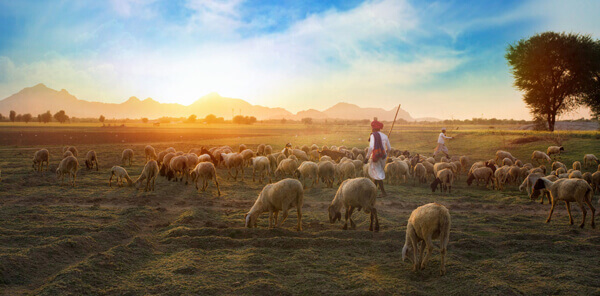Commons property resources and rural livelihoods
 Common Property Resources (CPRs) are natural or human-made resources owned by a community or a group of people rather than by individual or state. CPRs play a crucial role in the context of rural households and has a prominent share in the incomes of poor households. During the last few decades, rural areas have witnessed changes at multiple levels. The rural population dependent on agriculture have reduced with changing production patterns, livelihood patterns have been altered; market has penetrated hitherto un-reached land; infrastructure development projects have generated newer opportunities for villagers to migrate to urban centres for employment; several government schemes have been launched for employment generation, various local institutions such as SHGs have been created. Village economy has evolved with emerging market forces and integration with the mainstream economy. Along with these changes in the rural landscape, the CPRs are also shrinking at a quinquennial rate of 1.9%.
Common Property Resources (CPRs) are natural or human-made resources owned by a community or a group of people rather than by individual or state. CPRs play a crucial role in the context of rural households and has a prominent share in the incomes of poor households. During the last few decades, rural areas have witnessed changes at multiple levels. The rural population dependent on agriculture have reduced with changing production patterns, livelihood patterns have been altered; market has penetrated hitherto un-reached land; infrastructure development projects have generated newer opportunities for villagers to migrate to urban centres for employment; several government schemes have been launched for employment generation, various local institutions such as SHGs have been created. Village economy has evolved with emerging market forces and integration with the mainstream economy. Along with these changes in the rural landscape, the CPRs are also shrinking at a quinquennial rate of 1.9%.
The theme encompasses aspects of knowledge system around CPRs, the role of CPRs in livelihoods of rural population, conservation and management practices to ensure their sustainability and relevance of CPRs for the rural population, given the changes in the eco-system. Also, an initiative to prepare a formal record/documentation of the CPR will be undertaken in the form of a People’s Common Register (PCR). PCR is a potential instrument to record the different types of rights pertaining to CPR (use, usufruct, construction, alienation, change of forms, extraction of soil or stone, inheritance), and pursue a policy discourse on the same. As of now, there is no such record maintenance in wide use across the country. This research work aims to evolve a methodology to prepare People’s Commons’ Register (PCR)..
